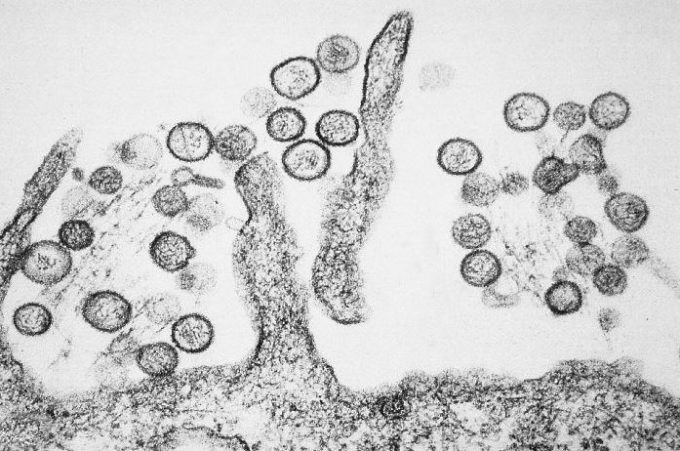
Illness in Tonosi: how healthy is
Panama’s immune response?
by Eric Jackson
Was it a church or state emergency, or an Act of God? On the surface there are answers but get a bit deeper and the answer becomes a bit less clear.
The Catholic Church, with coordination and support from President Varela, is doing a big buildup for next year’s World Youth Day, a Vatican-sponsored event that will bring Pope Francis to Panama late next January. Part of the promotion is a series of religious pilgrimages and processions in most parts of the country. But earlier this week it was announced that due to a particularly severe hantavirus outbreak the tour would skip the Tonosi area.
Who made the ultimate decision? By most published reports, the Ministry of Health made the announcement on July 25 after consulting with the church and local residents. The reported main concern was about foreign pilgrims staying at homes in the Tonosi area that might not be safe.
In any case, the decision was informed by the government, the Ministry of Health in particular. So far this year the ministry has diagonosed 49 cases of hantavirus infection in Los Santos province. Of these 34 have been in the district of Tonosi, with the rest of the cases, in descending order, in the districts of Las Tablas, Los Santos, Pocri and Pedasi. Precisely locating the place where such an infection was contracted after somebody gets ill from it — not all do — requires some detailed medical history-taking. An illness from hantavirus starts showing symptoms only a week or two after the infection is contracted. Over the years there have been hantavirus cases reported at hospitals in the Panama City metro area but on closer examination it turns out that the patients had been in affected parts of the Interior, usually the Tonosi Valley, before they got sick.
Also on July 25, parents, teachers and students at the Instituto Profesional de Tonosi called for a demonstration the following day. They said that it was because four students at that high school had been diagnosed with hantavirus infections.
On the 26th the morning protest blocked the road as advised, and that afternoon the Ministry of Health came to town for a public forum about not only hantavirus, but also problems with drinking water and with agricultural chemicals. In some cases the problems are related — wells contaminated by agricultural chemicals and unsanitary conditions including with drinking water caused by flooding along the Tonosi River are the obvious ones. But might hantavirus come into the interplay there, too?
Even with the best of equipment, well qualified lab workers and state of the science knowledge, hantavirus investigations can be complicated matters. It’s about viral, not bacterial, infections. First of all, which species of virus? The Hantavirus genus has at least 11 species that are associated with animal illnesses which may cross over to human beings. Lab tests have shown one of these species, the Choclo virus, to have caused illnesses in Panama. There is no specific treatment for the particular virus, but blood tests now available can show the presence of antibodies to that microbe and help physicians with their differential diagnoses, so that some other malady that requires a particular treatment is not mistaken for hantavirus.
Hantavirus pulmonary syndrome (HPS) is the disease that people tend to get from various species of the virus in the Americas. In the Old World there is another disease, Hemorrhagic fever with renal syndrome (HRFS), caused by hantavirus species found there.
The vectors of all hantavirus infections? Those are rodents, but not any species of rodent and more than one. By and large the vectors are wild rodents, not the usual rats and mice found in human habitations. In Panama various reports say one or two vectors. A certainly a known culprit is known by several names in several languages and one taxonomic name: Oligoryzomys fulvescens, a/k/a Fulvous Pygmy Rice Rat, Long Tail Mouse, Ratón de cola larga, Rata arrocera, Ratón colilarga and so on. These are little guys who live outside and occasionally move in great numbers to where people live.
So why the periodic invasions and consequent disease outbreaks? That gets into an environmental investigation that should start with where the suspect species tends to live and what it usually eats. Do these rodents ordinarily glean the rice crop and follow trails of dropped grains from where rice is grown to where the harvest is taken? That’s documented, but what else might it eat, and which weather or climate phenomena might have something to do with mass migrations?
Years ago, a famous study of an outbreak in the arid Four Corners region of the Southwestern United States found that unusually heavy rains for the area had caused a bumper crop of wild pinyon pine nuts. Pinyon mice and perhaps other wild rodents feasted, and their populations exploded — just at a time when the popularity of that sort of country living had been increasing, bringing more people into proximity to rodents breaking out of their usual habitats looking for food. It was a medical and environmental mystery that took the experts a little while to figure out.
What about Tonosi? Is it rats flooded out of their homes moving toward human habitations? Is it rain that prompts floods also increasing supplies of things that rodents eat, leading to population explosions?
And is cause somewhat beside the point, given that preventive measures may be taken in any case? But which preventive strategies?
There is no hantavirus vaccine. The incidence is relatively rare, more than one species of virus have to be taken into account and a lot of the problem is in places where people are not rich in the global scheme of things. The bottom line for the for-profit drug companies is that it’s not worth it to develop a vaccines.
The response among the many Panamanians who are oblivious to concepts of appropriate technology and in many cases uneducated in biology or ecology would be to find a chemical to spray or spread in pellet form about the land. But what if we kill off a lot of the target rodents and lots of the predators that eat them also die of starvation or indirect poisoning? What if the rodents reproduce quickly but not so the predators? Might the next rodent population explosion then proceed with fewer hindrances?
And what about the cultural aspect of ecology? Anywhere in the Interior of Panama, if you want to keep the rodent population down it’s best to leave the snakes alone — but that policy runs into a culture where the response to any sort of snake is with a machete.
If many Panamanians demand a chemical fix, around the world biological controls are the more sophisticated trends in dealing with pests. This may be much to the chagrin of chemical companies, but the usual best approach is to introduce, encourage or protect some natural predator of the species that’s not wanted.
What if the invasions are not population booms but just displacement by floods or other phenomena? Do we then talk about another contributing factor of human culture, people in and around the Martinelli administration looting a flood control and irrigation project for the Tonosi River Valley? A lot of money disappeared but the project never happened. If the phalanxes of mafia lawyers and perhaps the judges they may buy have anything to do with it, nothing will happen to bring the embezzlers and their confederates to justice, either.
As far as the Ministry of Health is concerned, it’s back to home prevention. Especially so, knowing something of why and how the particular rodents invade human spaces and that people get infected by breathing in the dust from dried rodent feces, urine, saliva or other bodily fluids. The advice is:
- Store grains in plastic bags, within plastic bins, all properly closed and sealed. Keep such containers on pallets and away from walls.
- Store firewood and lumber away from the house, in a dry place, on top of pallets.
- Keep kitchens clean and utensils enclosed in containers to keep rodents out.
- Do not let waste waters or runoff from rains to accumulate in or near your house. Keep any patios clean and dry.
- If you are opening a house or store room that has been unoccupied for some time, before cleaning spray it with water and let that soak for at least an hour before beginning to sweep. Use latex gloves and a dust mask when doing such cleaning.
For a useful guide to hantavirus prevention from the USA, click here.
~ ~ ~
These announcements are interactive. Click on them for more information.













